Juicy Turkey Burgers on the Grill? Don’t Overcook!
Turkey burgers are a fantastic alternative to beef when a healthier option is in order. They are lower in fat and calories and are still packed with protein and flavor. Since they’re lower in fat, cooking your turkey burgers to a food safe temperature and not a bit higher is important for your burgers to be as succulent and juicy as possible.
Why choose turkey over beef? Turkey burgers are what you’re looking for if you need to reduce your intake of fat and calories, or because of red meat food allergies. Here is a breakdown of the nutritional information for a frozen Butterball® turkey burger vs a standard frozen all-beef patty (both at a serving size of 4 oz.).
Nutrition Facts: Turkey Burger vs Beef Burger |
|||
| Butterball® Frozen Turkey Burger Patty, 4 oz. | Frozen All-Beef Hamburger Patty, 4 oz. | ||
| Calories | 180 | Calories | 310 |
| Fat | 8 g | Fat | 25 g |
| Cholesterol | 100 mg | Cholesterol | 85 mg |
| Protein | 22 g | Protein | 20 g |
| Calcium | 2% | Calcium | 2% |
| Iron | 8% | Iron | 10% |
| Sodium | 320 mg (13%) | Sodium | 460 mg (19%) |
It’s easy to see which option is best if watching your fat and calorie intake is a priority for you. Turkey burgers give you everything you love about traditional beef burgers, but they’re healthier.
Frozen Butterball® Turkey Burgers

The ease of being able to take the patties directly from the freezer to the grill is a real time saver. Keep some frozen turkey burger patties in your freezer at all times and you’ll be able to grill up a meal for any number of people at a moment’s notice.
Turkey Burger Temperature is Critical
Since these burgers are made from poultry, it’s important to cook them thoroughly. The internal temperature for food safety for ground turkey as recommended by the USDA is 165°F (74°C). But since turkey is such a lean meat and so susceptible to drying out, it’s important to pull them from the grill as soon as they reach their doneness temperature to avoid drying out the meat. Every degree counts when you’re grilling ground turkey.
How to Keep Turkey Burgers Moist—Don’t Overcook
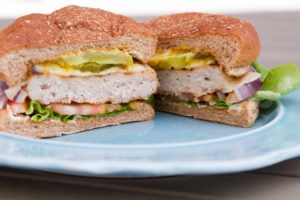
Since small pieces of meat cook quickly over high heat, you’ll want to keep a close eye on your turkey burgers’ internal temperature as they cook to be sure they do not overcook. The key to minimizing moisture loss and maximizing juiciness in burgers is through careful temperature tracking.
Resting: The Final Stage of Cooking
Not only does the internal temperature of meat continue to rise after being removed from the heat source (carryover cooking), but the protein fibers relax slightly and are able to reabsorb some of the moisture lost. To maximize juiciness, resting your turkey burgers is a step you won’t want to skip.
Top-Recommended Grilling Thermometer
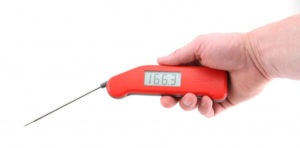
➤ How to Spot-Check A Burger’s Internal Temperature
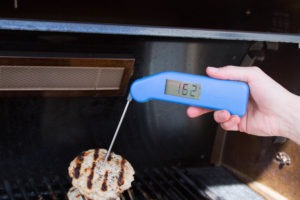
Push the probe tip past the center of the patty and slowly pull it back through the patty. Watch the temperature gradients as the numbers change on your Thermapen display. You’re looking for the lowest number shown before the temperature readings start going up again—that way you know you are measuring the thermal center of the patty. The tiny sensor in the very tip of the Thermapen’s probe makes this kind of accuracy possible.
It’s difficult to get an accurate temperature reading even in the thickest burgers. …we like to slide the tip of the thermometer into the burger at the top edge and push it toward the center. …turkey or chicken burgers should be cooked to well-done. —Master of the Grill, America’s Test Kitchen
How to Grill Turkey Burgers
Ingredients
1 package Butterball® Natural Inspirations Turkey Burger, with 100% white meat
- Salt and pepper to taste, or another dry rub seasoning (we used an all-purpose BBQ rub for half of our burgers)
- Vegetable oil for oiling grill grate
- This is especially important since turkey burgers are very lean.
Instructions
- Heat your grill for a direct, high-heat setup.
- Oil the grill grates well.
- Pull turkey burger patties directly from the freezer and place on the grill.
- Seasoning your turkey burgers
- Since seasoning doesn’t stick to frozen meat, you’ll season the burgers after they’ve started defrosting on the grill (See our posts How to Grill Frozen Steaks, and How to Cook A Frozen Turkey for more information on cooking frozen meat).
- Grill for a total of about 10-12 minutes, flipping once.
- The cooking time will depend on how thawed your burgers happen to be when you begin grilling, and how well your grill’s high heat is maintained.
- Spot-check the internal temperature of the burgers with the tip of your Thermapen.
- Insert the probe’s tip in multiple areas to be sure you have captured the lowest temperature in the burger.
- Once you have verified a temperature of 165°F (74°C), pull the burgers from the grill, tent with foil and rest for 5 minutes.
- Serve and enjoy!
These are a quick, easy, and healthy grilling option you can whip up all year long. Mind your temps and your turkey burgers will be a succulent success.
Products Used:
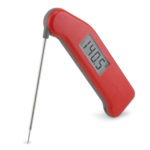
Resources:
Butterball® All Natural White Frozen Turkey Burgers


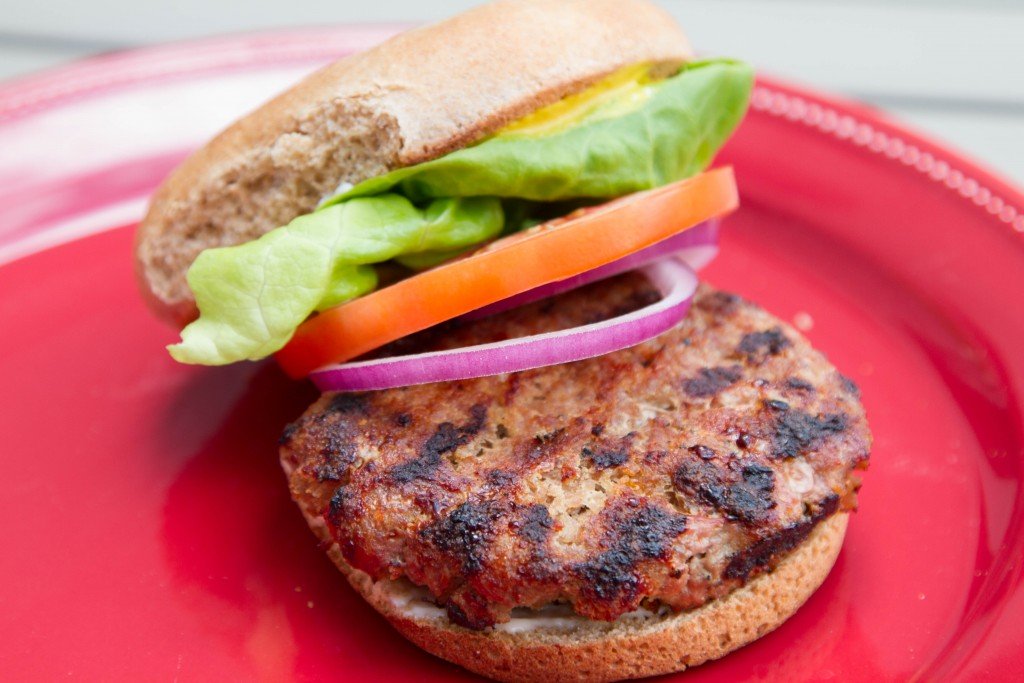

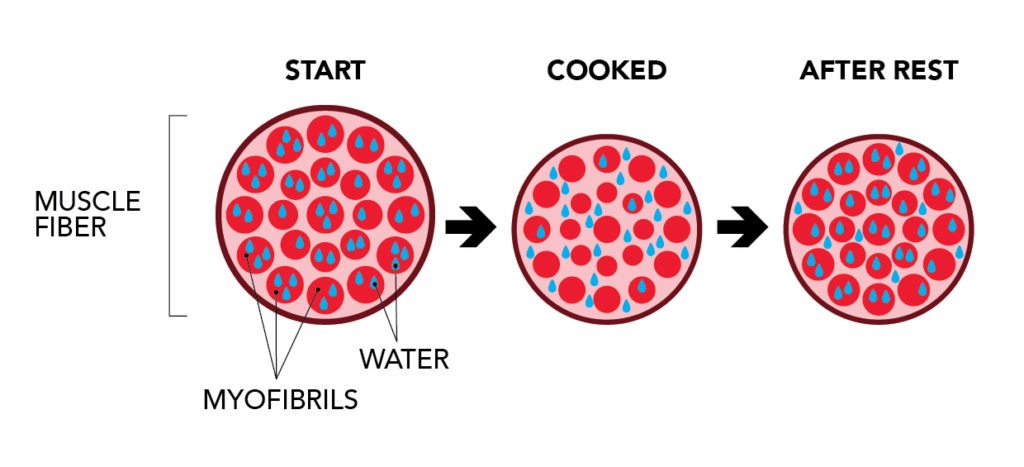
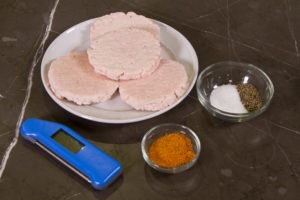 1 package Butterball® Natural Inspirations Turkey Burger, with 100% white meat
1 package Butterball® Natural Inspirations Turkey Burger, with 100% white meat

That USDA Time Temperature Tables article starts out complicated.
165 does provide an ‘instant’ pathogen kill, but the same level 7Log lethality can be accomplished at 148 for 2 minutes. And you avoid the 150 moisture unlock point. This seems like a worthy use of your temp sensor.
I really really like your web page. Its not loaded up with ads that slows my browser down. Love the grilling and smoking tips.
We prepare our turkey burgers using the lean ground turkey breast meat. We add gruyere cheese to this mixture (and onions or your choice of salt pepper etc) and make our patties. Spray both sides of each patty with an olive oil to prevent sticking, and cook to 165 F.
They always come out juicy and tasty.
Why add cheese to the cooked patty when you can incorporate it into the meat, to keep it moist?
Gary,
Thank you so much for your comment. That sounds so tasty!
Thanks,
-Kim